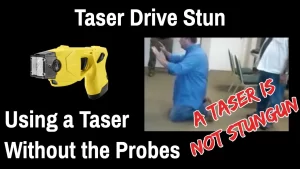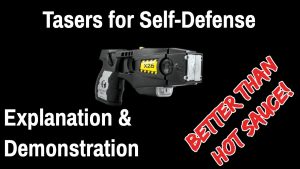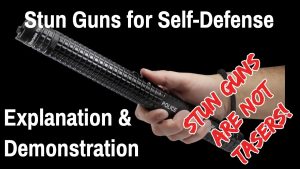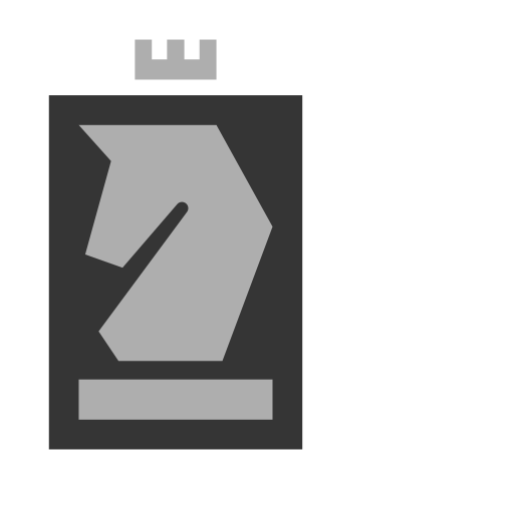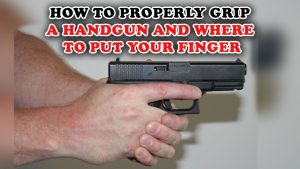
Handgun Immediate Action for Malfunctions
Typically in most basic firearm classes the student is told that if they have a malfunction they should put the firearm on safe, finger off trigger, table the firearm or keep it pointed downrange and raise their support hand to call for and instructor to clear the malfunction. That is a proper method when the students are brand new, however, in a self-defense class you should get training on handgun immediate action for malfunctions. Obviously in a two way range, you cannot raise your hand for a timeout, so you need to know how to get your own weapon back in service.
Tap, Rack, Assess (TRA) A.K.A. Immediate Action
Luckily a single procedure solves the majority of firearm malfunctions; therefore it should be ingrained as “Immediate Action” upon the firearm malfunctioning during an actual use of force event. Magazines sometimes are not always seated fully during reloads, or you may have inadvertently pressed the magazine release – so the first thing to do is “TAP” the magazine to ensure it is fully seated. Your gun will not break if you use a little force here, so don’t give a love tap – smack it with enough force to seat it properly.
Next you rack the slide. This will insert a new round in the chamber – which solves a problem caused by a mis-seated magazine, a misfired round, and solve any number of other cartridge related problems. It will also re-cock the firearm and prepare it for use.
Assess is the last step. At this point the firearm SHOULD be ready to fire, so if you are in a defensive situation, you are legally and morally responsible for each round fired, so you need to always assess the situation to ensure you need to fire the handgun. In the Marine Corps the immediate action drill is Tap, Rack, Bang (TRB) and once the semi-auto is re-racked, Marines are taught to fire a test round. Mechanically this makes sense, however, Marines are under a completely different set of rules than us civilians. Just imagine having to testify that the reason you fired a particular round is because “you needed to see if the gun worked”.
Lastly, I have said that TRA needs to be an ingrained action, and its true you need to practice this until it is second nature. However, there is some danger to this. If the reason for your malfunction is a squib load (that did not fully clear the barrel and is stuck inside it), you can “grenade” your gun if you fire it with a barrel obstruction. During a situation where someone is actively trying to kill you, the odds of them doing so is MUCH greater than the low statistical probability of a squib load. In this case I would act in accordance with the greater threat. On a practice range, I the risks of a squib load outweigh the risks of taking time to properly clear the firearm. Basically use some sense and choose your tactics based upon your risks.
Stovepipe
Another malfunction of a semi-automatic is a failure to fully eject. It can be caused by an excessively dirty firearm, a broken ejector, or improper shooting position. If the ejected round does not clear the firearm before the slide returns, it can be caught by the slide and will stick out of the ejection port like a stove pipe sticks out of a roof.
Some instructors teach TRA to clear this malfunction, and that works most of the time, as well as being a simple training solution. I teach a specific method because with a stove pipe the diagnosis is clear. The gun isn’t working because a spent round is stuck – remove stuck round…
The procedure is simple. While holding the firearm with your shooting hand, make a karate chop hand with your support hand. Place your index finger of your chopper on the top of the slide somewhere between the ejection port and the front sight post (hand angled to keep your pinky well away from the muzzle). Forcefully but smoothly run your hand along the slide toward your body. Your finger should catch the stovepipe round and rip it out of the slide. You will then need to grasp the slide and rack it. Assess the situation, gun is back in service.
Double Feed
This is a more complicated problem that requires a more complicated fix. If you get a double feed in a defensive situation its best to go to a backup gun. If this is not possible get behind cover (if your not already – why aren’t behind cover already). TRA won’t work in this situation because even if you manage to eject the round attached to the extractor, the slide will want to pick up a new round and since you have a round already in the chamber, you will just cause a new double feed.
Before you can fix the problem you will have to remove the magazine. This is problematic as the slide has tried to push a round into the chamber. This causes the round in the top of the magazine to still have a portion of it under the feed lips of the magazine, but the bullet tip is partially in the gun. That means that the magazine cannot fall free. You must pull the magazine out manually as you simultaneously depress the magazine release.
I added a “finger grooved” floorplate to my Glock magazines specifically to give me leverage in the event of a double feed. If your magazine fits flush inside the magazine well you may not be able to pull it out. If that is the case, you can always fall back on the physics of inertia. With your shooting hand depressing the magazine release, rapidly and forcefully bring the gun down towards your knee (karate chopping again) while rapidly and forcefully bringing your knee up (like kneeing someone in the face with your wrist being the face). You want your wrist to contact your knee and abruptly stop movement. If the magazine release is activated the weight of the rounds in the magazine will cause it to want to keep moving downward and should cause the mag to fly out of the gun. If you miss your knee with your wrist and smack it with the butt of the gun, the gun may fly out of your hand and you may hop around exclaiming some descriptive but socially unacceptable words.
While the magazine is out of the gun, forcefully rack and re-rack the slide several times until the extractor hook pulls the cartridge out of the firearm.
Insert a fresh magazine if possible – if not check the extracted magazine to ensure rounds are seated properly and reinsert it.
Rack and Assess.
Obviously, this is a concept you need to practice with dummy rounds, and use as applicable. If you are crouched behind a car, you may not be able to perform this exactly as shown on the video. Inertia applies just as well with you smacking your wrist on a car tire as your knee, be flexible and make it work.
In closing, no video or article can replace your learning and practicing these techniques in the presence of a skilled instructor. If you learn it wrong, you will perform it wrong, and without guidance you cannot be sure your performing it to perfection.


